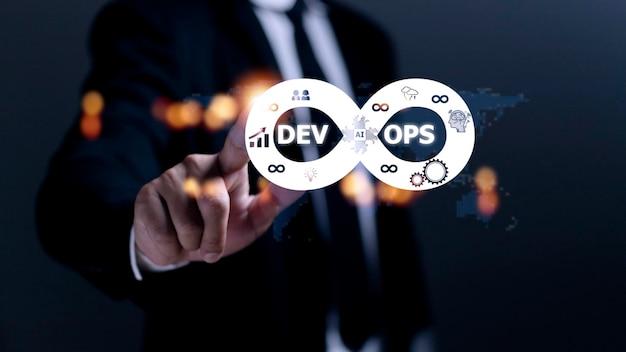The Comprehensive Guide to Product Engineering Services: Driving Innovation and Efficiency

Audio : Listen to This Blog.
In today’s dynamic market landscape, companies face relentless pressure to innovate and adapt to ever-changing consumer demands and technological advancements to stay ahead of the competition. Product engineering services play a pivotal role in helping clients stay ahead by enabling them to introduce innovative products and maintain a competitive edge in their industries. Amidst this backdrop, product engineering services emerge as a crucial catalyst for innovation, providing companies with the expertise and resources needed to bring their ideas to life. This article comprehensively explores the multifaceted realm of product engineering services, offering insights into their significance, the intricacies of their phases—from ideation to deployment—and the array of advanced technologies they employ to drive innovation and efficiency.
Definition and Scope of Software Product Engineering Services
Product engineering services encompass the entire product development lifecycle, from conceptualization to deployment. These services are not limited to the technical aspects but also involve strategic collaboration with stakeholders to ensure the final product aligns with market needs and business objectives.
Key components include:
Crafting Innovation: The Art of Designing

Designing forms the foundational stage of product engineering services, entailing the creation of comprehensive blueprints, schematics, and prototypes that delineate the product’s form and function. Designing encompasses various activities, including conceptualization, user research, wireframing, and prototyping. Designers collaborate closely with stakeholders to translate requirements and user needs into tangible specifications.
Through iterative design processes, teams refine and iterate on prototypes to optimize usability, aesthetics, and manufacturability. Advanced design tools such as computer-aided design (CAD) software empower designers to visualize and iterate on design concepts with precision and efficiency, ensuring alignment with project objectives and stakeholder expectations.
Bringing Ideas to Life: The Development Journey

Developing constitutes the phase where the envisioned product takes shape by applying advanced methodologies and technologies. Development teams leverage programming languages, frameworks, and libraries to implement the functionality outlined in the design phase. Agile methods such as Scrum or Kanban promote iterative development cycles, enabling teams to swiftly adapt to changing requirements and feedback.
Continuous integration (CI) and continuous delivery (CD) pipelines automate the build, test, and deployment processes, ensuring rapid and reliable delivery of new features and updates. Collaborative development tools and version control systems facilitate seamless collaboration among distributed teams, fostering synergy and productivity throughout the development lifecycle.
Beyond Testing: Ensuring Excellence

Testing is a critical aspect of product engineering services, encompassing methodologies and tools to rigorously evaluate the product’s performance, functionality, and reliability. Quality assurance (QA) engineers conduct various types of testing, including unit testing, integration testing, system testing, and acceptance testing, to uncover defects and vulnerabilities at each stage of the development lifecycle. Test automation frameworks streamline the execution of test cases, ensuring comprehensive test coverage and faster feedback loops.
Performance, security, and compatibility testing validate the product’s scalability, resilience, and interoperability across diverse environments and use cases. Through meticulous testing, teams identify and rectify issues promptly, safeguarding product quality and customer satisfaction.
Launching Dreams: The Deployment Odyssey

Deploying marks the culmination of the product engineering journey, encompassing the seamless transition of the product from development to production environments and its subsequent launch into the market. DevOps practices and deployment automation tools streamline the deployment process, minimizing downtime and mitigating risks associated with manual interventions. Continuous deployment pipelines enable teams to release updates and enhancements swiftly while ensuring stability and reliability.
Deployment strategies such as blue-green deployments and canary releases enable the gradual rollout of new features, allowing teams to monitor performance and user feedback in real time. Post-deployment monitoring and analytics provide valuable insights into product usage, performance metrics, and user behavior, enabling teams to iterate and optimize the product iteratively post-launch.
Importance of Product Engineering Services
In a market where time-to-market and product quality are critical, product engineering services offer several significant advantages:
Accelerating Time-to-Market

Product engineering services act as turbochargers for development, propelling products from concept to market at breakneck speed. This velocity ensures timely market entry and positions companies to outpace competitors, swiftly seizing coveted first-mover advantages.
Navigating the Efficiency Highway
In product engineering, efficiency is the compass guiding teams through the development labyrinth. These services transform operations into a well-oiled machine, maximizing productivity and minimizing wastage by streamlining workflows, trimming excess, and finely tuning resource allocation.
Crafting Excellence
Quality isn’t just a checkbox; it’s a cornerstone of product engineering services. Engineers and designers, like skilled artisans, hone their craft with precision and dedication, ensuring that each product embodies reliability, performance, and customer satisfaction. In this realm, excellence isn’t an option—it’s the standard by which success is measured.
By leveraging these services, companies can focus on core competencies while benefiting from specialized expertise in product engineering.
Technologies and Tools in Product Engineering
Product engineering harnesses a plethora of cutting-edge technologies and methodologies aimed at optimizing efficiency and efficacy throughout the development lifecycle:
Agile Development

This iterative approach to software development emphasizes flexibility and collaboration. By breaking down the development process into small, manageable increments called sprints, Agile enables teams to respond swiftly to changing requirements and stakeholder feedback. Continuous integration and continuous delivery (CI/CD) pipelines automate the build, test, and deployment phases, ensuring rapid and reliable delivery of new features and updates.
DevOps

DevOps is a cultural and technical framework that promotes seamless collaboration between development and operations teams. DevOps accelerates software delivery while improving its stability and quality by automating infrastructure provisioning, configuration management, and deployment processes. Continuous monitoring and feedback loops enable teams to identify and address issues promptly, fostering a culture of constant improvement and innovation.
Design Thinking
Design thinking is a human-centered approach to innovation that prioritizes empathy, creativity, and experimentation. By understanding user needs and pain points, teams can ideate, prototype, and iterate on solutions that effectively address real-world problems. Design thinking encourages cross-disciplinary collaboration and iteration, resulting in intuitive, user-friendly, and impactful products.
CAD/CAM Software
Computer-aided design (CAD) and manufacturing (CAM) software revolutionize product design and manufacturing processes. CAD software enables engineers to create detailed 2D and 3D models of components and assemblies, facilitating precise visualization and analysis. CAM software automates the generation of toolpaths and machining instructions, optimizing the manufacturing process for efficiency and accuracy.
Simulation Tools
Simulation tools enable engineers to conduct virtual testing and optimize product designs before physical prototyping or production. Finite element analysis (FEA), computational fluid dynamics (CFD), and structural analysis tools simulate the behavior of components under various conditions, allowing engineers to identify potential design flaws or performance bottlenecks early in the development cycle. By iteratively refining designs based on simulation results, teams can optimize product performance, reliability, and safety while minimizing costly physical prototypes.
Prototyping Platforms
Rapid prototyping platforms expedite the creation of functional prototypes for validation and testing purposes. 3D printing, CNC machining, and laser cutting technologies enable engineers to fabricate physical prototypes directly from digital designs quickly and cost-effectively. By iterating on prototypes based on user feedback and performance testing results, teams can refine product designs iteratively, reducing time-to-market and enhancing product-market fit.
By leveraging these advanced technologies and methodologies, product engineering teams can streamline the development process, enhance collaboration, and deliver high-quality, innovative products that meet customer needs and expectations.
Quality Assurance and Test Automation

Quality assurance (QA) and testing play pivotal roles in product engineering. These processes ensure that the final product aligns with its intended functionality, adheres to regulatory standards, and satisfies customer expectations. Within the spectrum of testing methodologies, several key approaches stand out:
Unit Testing
This methodology scrutinizes the functionality of individual components within the product. Developers can identify and rectify defects or inconsistencies early in the development lifecycle by independently isolating and assessing each element.
Integration Testing

Products often comprise multiple interconnected components, making integration testing indispensable. This process evaluates how these components interact and function collectively, verifying that they seamlessly integrate and perform as expected when combined.
User Acceptance Testing (UAT)
Ultimately, a product’s success hinges on its ability to meet the needs and preferences of its end-users. UAT is the litmus test for user satisfaction that validates whether the product aligns with user expectations, requirements, and usability standards.
By embracing robust testing protocols throughout the product engineering journey, companies can mitigate the inherent risks of post-launch failures. Comprehensive testing bolsters the product’s reliability and performance and fosters enhanced customer satisfaction and trust.
Future Trends in Product Engineering Services
Emerging technologies are continually reshaping the landscape of product engineering. Some of the key trends include:
Artificial Intelligence (AI) and Machine Learning (ML)

AI and ML algorithms are increasingly integrated into product development workflows, revolutionizing various aspects of the process. Predictive analytics powered by AI enables proactive decision-making by forecasting market trends, customer preferences, and potential product performance. ML algorithms automate repetitive tasks such as data analysis, pattern recognition, and optimization, freeing human resources for more strategic endeavors.
Moreover, AI-driven insights enhance decision-making processes by synthesizing vast amounts of data and identifying actionable patterns, ultimately leading to more informed and data-driven product development strategies.
Internet of Things (IoT)

The proliferation of IoT devices is driving the creation of smart products that can communicate, collect data, and interact with other devices over the internet. IoT-enabled sensors embedded within products gather real-time data on usage patterns, environmental conditions, and performance metrics, providing valuable product optimization and predictive maintenance insights.
By leveraging IoT connectivity, products can offer enhanced functionalities such as remote monitoring, predictive maintenance, and personalized user experiences. Furthermore, IoT ecosystems enable seamless integration between products and services, unlocking new revenue streams and business models for companies.
Augmented Reality (AR)

AR technology revolutionizes product design and prototyping by enabling immersive simulations and visualizations. Designers and engineers can leverage AR tools to overlay virtual prototypes onto physical environments, allowing for real-time visualization and interaction with virtual objects. This enables stakeholders to evaluate product designs in context, assess ergonomics, and identify potential design flaws before physical prototyping.
AR also facilitates collaborative design reviews by enabling remote stakeholders to participate in virtual design sessions regardless of their geographical location. Overall, AR accelerates the design iteration process, reduces time to market, and enhances the overall quality of the final product.
Blockchain

Blockchain technology offers unparalleled security and transparency in product development processes, particularly in supply chain management and data integrity. By leveraging decentralized ledgers, blockchain ensures the immutability and integrity of critical product data throughout its lifecycle, including design specifications, manufacturing records, and quality assurance documentation.
Smart contracts, powered by blockchain, automate and enforce agreements between stakeholders, streamlining transactions and mitigating disputes. Additionally, blockchain enables traceability and provenance tracking, allowing companies to verify the authenticity and origin of components and materials used in their products, thereby enhancing trust and accountability across the supply chain.
By staying abreast of these trends, companies can leverage cutting-edge technologies to drive innovation and maintain a competitive edge.
Conclusion

Product engineering services are indispensable for companies aiming to innovate and excel in today’s dynamic market. By comprehensively understanding the definition, importance, phases, technologies, and future product engineering trends, businesses can strategically harness these services to achieve operational excellence and market success.
